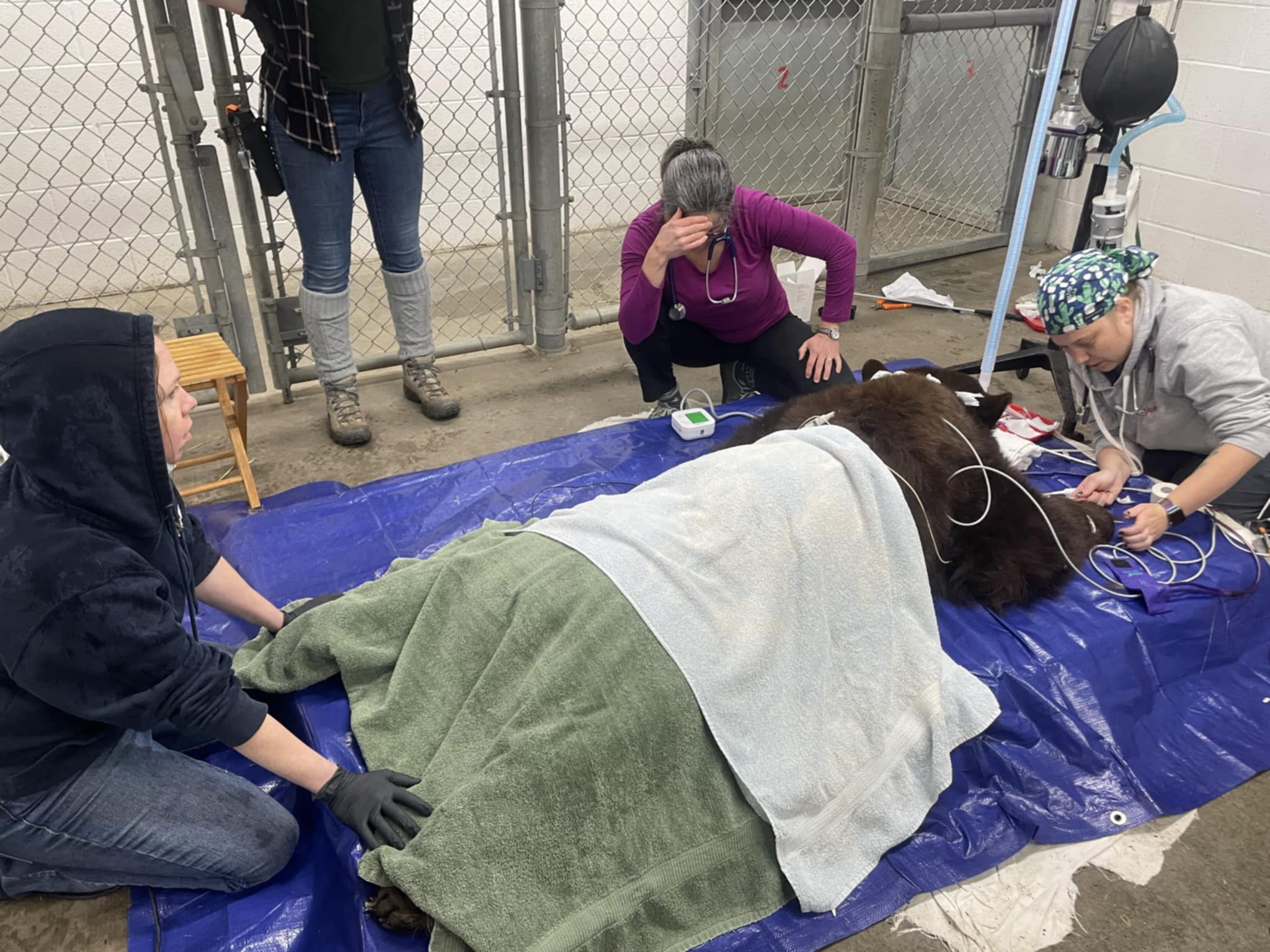- Overview of Tule’s annual exam and neutering procedure.
- Importance of training for stress reduction and recovery.
- The role of veterinary care in zoo management.
- Conservation goals and breeding policies of Sequoia Park Zoo.
- Understanding black bear population dynamics and habitats.
Tule, an American black bear residing at Sequoia Park Zoo, recently received a significant examination that encapsulates the multifaceted approach modern zoos employ to ensure animal welfare and conservation. At the end of March, Tule’s annual health check was conducted, alongside a crucial neutering procedure. This article explores the meticulous process, highlights the training for stress management, delves into veterinary care, outlines the zoo’s conservation strategy, and examines black bear population dynamics.
The annual health examination is a cornerstone of maintaining Tule’s well-being. Such assessments involve a series of tests and procedures intended to monitor and preserve the overall health of zoo animals. For Tule, this included standard procedures such as blood work, dental checks, and body condition assessments. The neutering procedure carried out was a strategic decision aligned with the zoo’s policies. By implementing a non-breeding strategy for black bears, Sequoia Park Zoo focuses on housing orphaned, injured, or habituated bears without contributing to population pressures.
Training plays a vital role in preparing animals like Tule for medical procedures, contributing significantly to reducing stress and facilitating effective recovery. Zookeepers worked with Tule, training him to accept sedation injections and to stand cooperatively for post-surgical inspections. This preparation helps minimize the bear’s stress and allows for safer interactions between him and the veterinary team. Training bears in this way exemplifies modern zoo techniques that prioritize animal welfare and smooth recovery from medical procedures.
High-standard veterinary care is essential in a zoo setting. The involvement of Dr. Jennifer Tavares, VMD, and associates in Tule’s care underscores the collaborative efforts required between zookeepers and veterinary experts. Specialist care ensures that procedures like neutering are completed efficiently and safely, helping maintain Tule’s health. Veterinarians work in tandem with animal care staff, constantly updating strategies based on the latest research and technological advancements.
Conservation goals guide the operation and policies of Sequoia Park Zoo. While some zoos focus on breeding programs to sustain endangered species, the Sequoia Park Zoo’s strategy reflects its specific mission. Given the stable population levels of American black bears, the zoo avoids unnecessary breeding and prioritizes offering sanctuary to bears unable to survive in the wild. This approach fits within broader conservation efforts aimed at addressing issues such as habitat fragmentation, anthropogenic threats, and climate change impacts.
Understanding the population dynamics of black bears is crucial for effective wildlife management. American black bears, scientifically known as Ursus americanus, have one of the widest distributions among bear species, thriving across diverse habitats in North America. Their adaptability to various environmental conditions contributes to their stable population, a factor considered by the zoo in its non-breeding policy. Conservationists monitor these dynamics closely to ensure that interventions remain beneficial to the species and their ecosystems.
Sequoia Park Zoo’s efforts to provide a home for bears like Tule reflect an ongoing commitment to wildlife conservation. Through careful planning, training, and veterinary collaboration, the zoo demonstrates an effective model for managing animal welfare while upholding conservation principles. Tule’s clean bill of health represents not only a triumph for the veterinary team but also a testament to the broader goals of zoological institutions in supporting wildlife and educating the public about conservation challenges and solutions.
*****
Source Description
✔ Clean bill of health for Tule 🐻
At the end of March, Tule the American black bear received his annual exam as well as an important procedure – he was neutered!
Zookeepers prepared Tule for the big-day by training a variety of skills to help reduce stress and aide in recovery including allowing an injection for sedation and standing up at the fence for staff to inspect the surgery area easily during recovery.
Tule spent a few days inside after the initial surgery but was soon back to his typical antics including zooming up and down the redwood trees.
Thank you to Dr. Jennifer Tavares VMD and associates for providing excellent care to Tule.
Breeding black bears is not a goal for Sequoia Park Zoo due to their stable population status and our Zoo’s commitment to providing homes for orphaned, injured, or habituated black bears in need.


